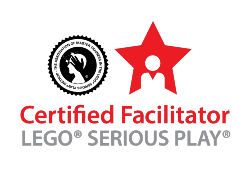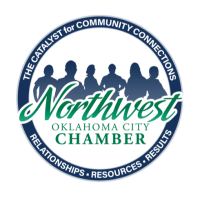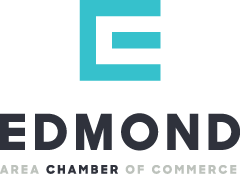
Brands can’t be everything to all people. Knowing your market includes knowing what you offer, who and where your people are and what your competitors are doing. Defining a business’ market takes the guesswork out of advertising and reveals how to communicate with customers effectively and efficiently.
In this edition of our Power of a Brand series, we discuss a company’s market, including what it means, how to outline your market and why it is essential for building a powerful brand. A company’s market makes up a critical piece of a powerful brand.
This post will benefit business owners and entrepreneurs who either don’t know or want a refresher on what market segmentation is. Knowing your market is critical to creating a powerful brand and where to spend your marketing dollars and efforts. And as small business owners and entrepreneurs know, it all boils down to where you will get more bang for your marketing bucks.
What is a market?
A company’s market is a subset of people most likely to buy your service or product. Marketing professionals commonly use “target market” or “positioning” to describe a company’s market. Like basketball, where you put yourself in a position to receive a pass and score, a small business must position itself to win more customers.
Companies can have more than one target market to aim their marketing efforts. To create a target market, marketing professionals usually start by defining customers by location, age, gender, income and education level, also known as demographics. You already know how important defining a target market is using demographics if you’ve taken a survey from a company following a recent purchase.
Some businesses divide their target markets using psychographics or qualitative measures. Psychographics identify the people most likely to need or purchase your services based on interests, behaviors, personality, lifestyle, social status and more.
Market segmentation also refers to knowing what a company offers versus their competitors and where its most profitable clients are located. Having awareness of what obstacles a competitor may throw a company’s way and how they will throw them can also help define where a business should spend its marketing dollars.
Why is defining a market important for creating a powerful brand?
Uptimize identified three reasons defining your target market would make your brand more powerful and memorable and move people to want your product or service.
- Brand Loyalty
A powerful brand builds customer loyalty, and building loyalty starts with personalizing the messages customers receive. Personalization beats generic any day.
When a company knows who to reach, what to say, when to say it and where to reach them, it can feel like the company speaks directly to the customer. Chances are a person will feel connected to that business and more likely purchase from them. This connection doesn’t have to be deep, just one that makes sense.
Companies of all sizes and from any industry can benefit from market segmentation. For example, attorneys who define their markets before advertising their services can save significant time and earn more money. Again, speaking to everyone instead of a specific group can leave your marketing generic and ineffective.
The different types of law practices can lead to the natural segmentation of customers into markets. Whereas some attorneys target business owners, others focus on individuals, such as personal injury lawyers. The attorneys that focus on business law, for example, can further detail their market segments by a business’s size, such as targeting those that make more than five million in revenue.
- Spending money wisely
It’s easier and more cost-effective for a company to know where to spend its advertising dollars once it defines its target market. Cost efficiency also increases when a business knows where the customer will most likely purchase its services, and why it can spend its advertising budget there and forget the rest.
This spending allocation and positioning are similar to buying a gift for a loved one. Yes, you can purchase a gift card, and that works, but a more personal gift usually gets a better reaction. So, knowing the target market helps a company strategically purchase advertising in the places that mean the most to its potential customers.
- One-up the competition
Potential customers notice when a company has a solid grasp on what they need and who they are. Savvy companies who spend time diving into defining their target markets may find ways to reach customers the current competition hasn’t identified, and this might be easier than you think.
Often, companies are too busy to work on strategically defining their target market. But advertising money gets spent haphazardly if a company doesn’t segment their customers and knows how, when and where to speak to them.
We frequently see this with companies in crowded spaces, where several companies offering the same type of service advertise heavily in one media.
For example, Facebook ads are a logical way to reach people, since we all spend a lot of time online. Small businesses will find it easy and rewarding to advertise here because you can choose who you want to tailor your ads to based on demographics. But this might be too easy. Although Facebook ads are still effective, most people don’t live 24/7 on Facebook. So, why not try advertising on different social media? Market segmentation can reveal other social media advertising opportunities such as industry-leading blogs and podcasts, the company’s website, other social media sites, and much more.
The intelligent company will forge ahead using a different method and possibly gain more new customers out of reach of what the competition is going after.
How do you get to know your target market?
How do you know who makes up your company’s target market? Many small business owners aren’t fully aware of their market. They may know who they serve but may not understand where the company fits in compared to their competition, where and how to reach customers or the full scope of pain points the business can solve for customers.
The quickest and easiest way to define a target market is to look at who buys the services your company sells and then segment these people based on demographics. If the business is just opening, an owner can look at what competitors in the community are doing.
However, a quick and easy approach alone won’t lead to a powerful brand and successful leads. More than likely, this segmentation will be too broad. There are several tools and methods to further narrow a target market to the most ideal and profitable potential customers.
What else makes up a company’s target market?
We have discussed potential customers that define a target market up to this point. But uncovering a company’s market also includes understanding what community it serves and analyzing competitors. Knowing these allows a business to understand where they will most likely find success and how they could change their messaging and one-up the competition.
A competitive analysis includes reading what customers are saying about a competitor in online reviews, what they offer, the prices they offer their products or services and more. Along with learning about competitors, this exercise also gives a business insight into its performance in the marketplace.
Along with understanding location and competition, marketers often examine a business’s pricing structure, strengths, and weaknesses to get a better idea of where the company currently stands and the opportunities or potential threats the company might face.
Final Thoughts
Creating a powerful brand includes the key element of defining the target market or position. When a company positions itself correctly to customers, they are more likely to win more business and create a valuable reputation and a long-lasting, powerful and profitable brand.
Defining the target market takes time and can be overwhelming, but we are here to help answer any questions you might have. Book a free, no-obligation session to chat. We’d love to hear from you.
Interested in learning more? Book a free 30-minute consult: Schedule a consult.










